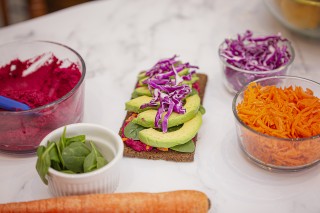“Belly fat” is one of the most prevalent of the latest buzz terms in the health and fitness field, with many miracle cures touted by authors, supplement companies, and infomercials.
Why worry about belly fat?
When we talk about belly fat, what we are really concerned about is visceral fat, or the fat that lies deep within the abdomen surrounding the organs. Not long ago, experts believed fat was just this viscous blob that sat dormant. Now we know that visceral fat is hormonally active, and this metabolic activity can wreak havoc with your health. In fact, women with a waist circumference of > 35 inches, and men with a waist circumference of > 40 inches are at an increased risk for many illnesses including:
- Heart disease
- Breast cancer
- Diabetes
- Metabolic syndrome
- Gallbladder problems
- High blood pressure
- Colorectal cancer
- Alzheimer’s
When you measure your waistline, be sure to place the tape above the hip, and just below your navel to ensure more accuracy when you follow up and measure again. No sucking in your gut, and no tugging tightly on the tape measure, please!
Where does belly fat come from?
As we age, our lifestyles tend to become more sedentary. Our metabolism slows, and we burn fewer calories at rest. Hormonal changes and genetic factors can cause weight to shift from our extremities to our midsections. So, even if you have maintained your weight, you may find yourself with a belly anyway. This is a common complaint I hear from my clients – while they weigh the same, they find that they now have “muffin tops” or some form of belly bulge that was not there before.
The Good News:
Visceral fat is very responsive to regular exercise and adopting healthy lifestyle habits like increasing complex carbohydrates and reducing caloric intake. Visceral fat is lost more quickly than subcutaneous fat, especially if you have more to lose.
Here are my top tips to lose that belly fat:
1. Swap Refined Carbohydrates for Whole Grains – In a recent study in the American Journal of Clinical Nutrition, participants who consumed a calorie controlled diet including all whole grains lost more belly fat than the group that ate the same diet, but consumed refined carbohydrates instead of whole grains. The fiber in the whole grains will keep you full, and your insulin levels steady.
2. Include Monounsaturated Fats (MUFA) – MUFA’s are found in olive oil and canola oil, avocados, soy, and nuts and seeds. Not only is this fat heart healthy, there is some research to indicate that including MUFA’s in a calorie controlled diet may help to decrease belly fat. In a recent study in the British Journal of Nutrition, a high MUFA diet improved glucose control and insulin sensitivity compared to a typical Western diet high in saturated fat and sugar. Even though some research supports a high MUFA diet, it is still high in calories, so don’t throw caution to the wind with these foods. An avocado has about 300 calories, 1 tablespoon of olive oil has 120 calories, and 1oz of almonds has 169 calories, so you need to watch your portion sizes and not exceed the amount of calories you need for your weight goal.
3. Drink Green Tea – Green tea contains compounds called catechins which have been associated with protecting against certain types of cancer, warding off infection, and more recently, with weight loss. In a recent study in Obesity, participants who drank catechin-enriched green tea decreased belly fat, waist circumference, and total body fat.
4. Get Moving – Currently, more than 60% of Americans do not exercise regularly, so if “Just Do It” doesn’t do it for you, you are not alone. While we technically can’t “spot reduce,” exercise will preferentially use belly fat for energy. Research shows that people who exercise 60 minutes daily are more likely to keep weight off. Your program should include a variety of cardiovascular, strength, and flexibility training. Choose activities you like, and break it up into smaller bouts if you cannot commit to an hour. If you are just starting out, get a pedometer and aim for 10,000 steps per day. Be sure to seek out a qualified professional, as many states have no laws regarding who can give exercise prescription.
5. Calories Count – In order to lose belly fat, or any fat for that matter, you need to consume less calories than your body needs for weight maintenance. A quick way to calculate how many calories to consume for weight loss is to take your body weight and add a zero. Use this as a baseline, or starting point. Then adjust up or down as needed.
Whatever plan of action you choose, don’t fall prey to those advertisements that offer quick fixes. With some reasonable lifestyle changes and consistency, you can be well on your way to losing that spare tire, improving your health, and looking and feeling your very best!


 Follow Me On Instagram
Follow Me On Instagram Like My Facebook Page
Like My Facebook Page My LinkedIn
My LinkedIn



